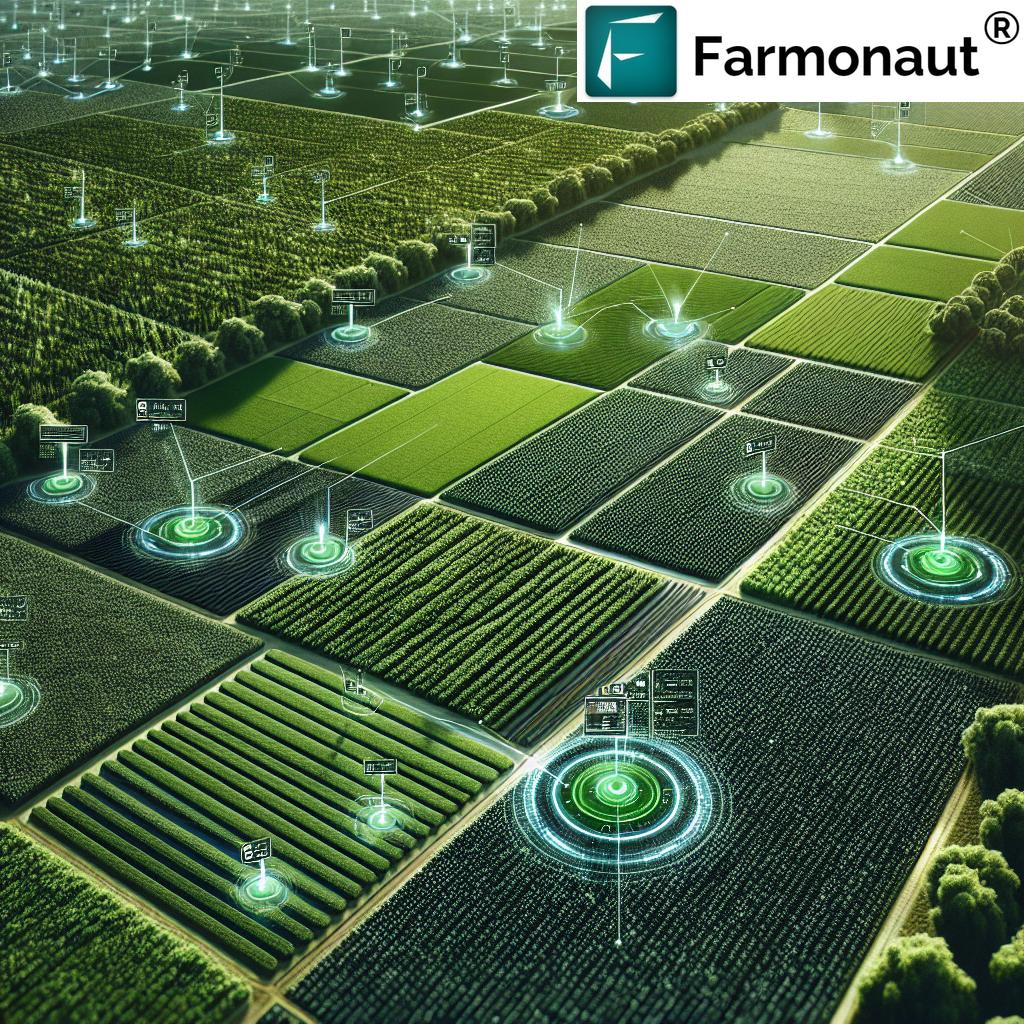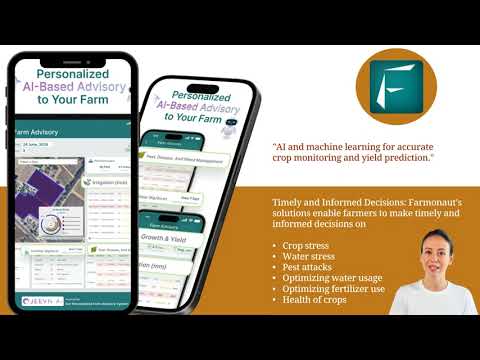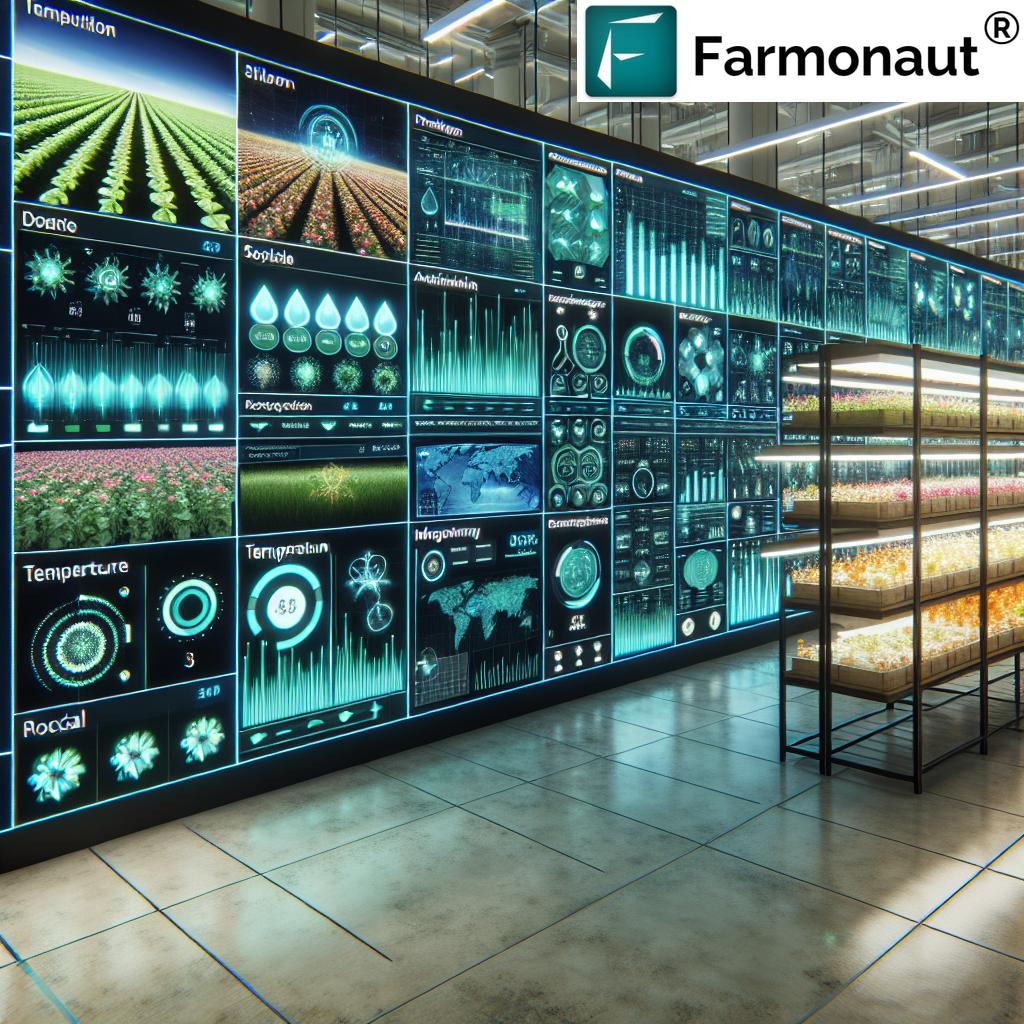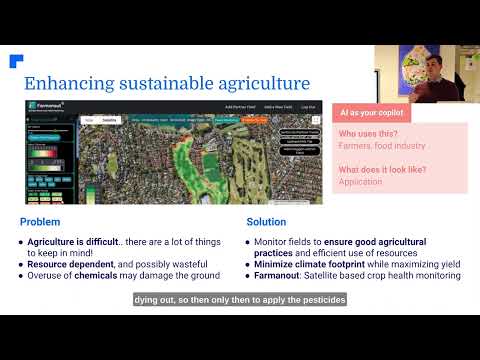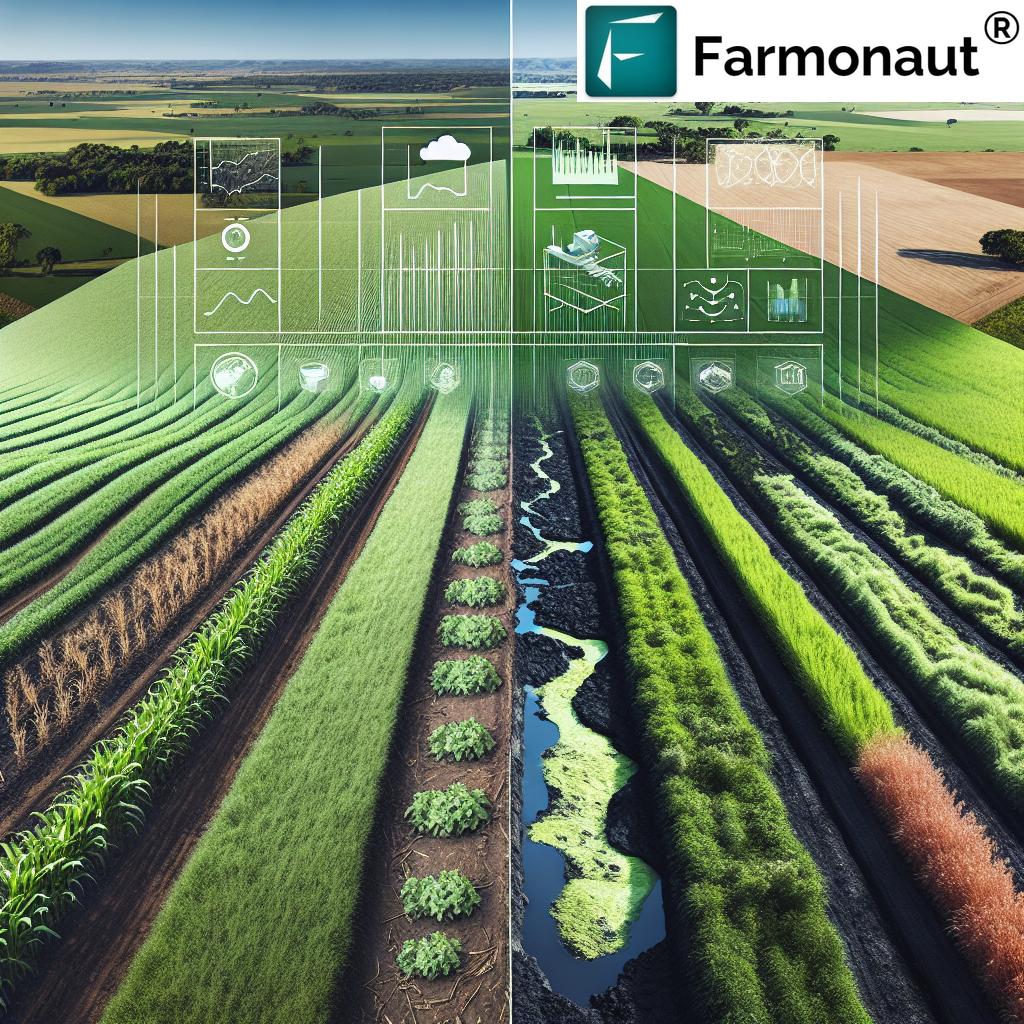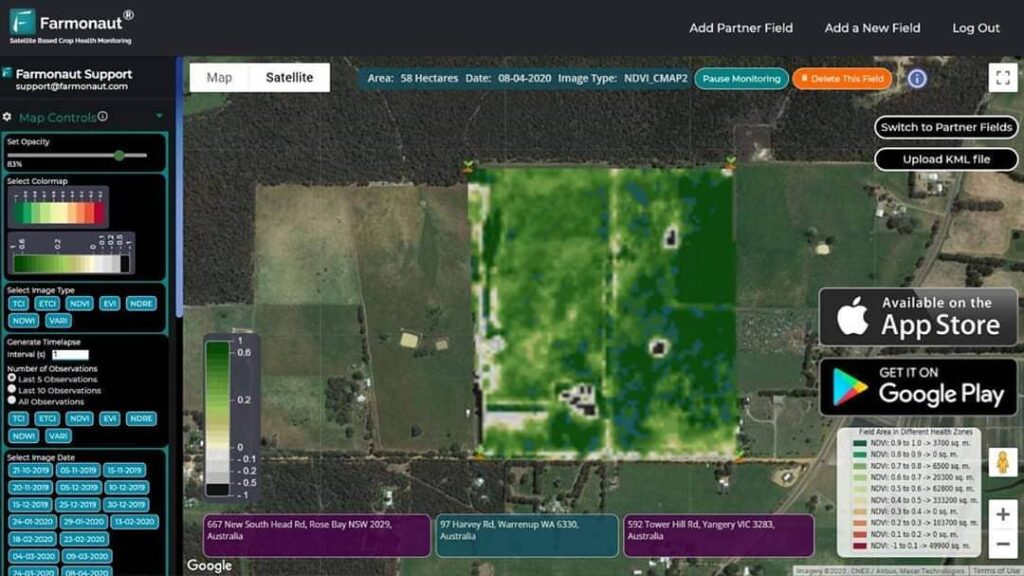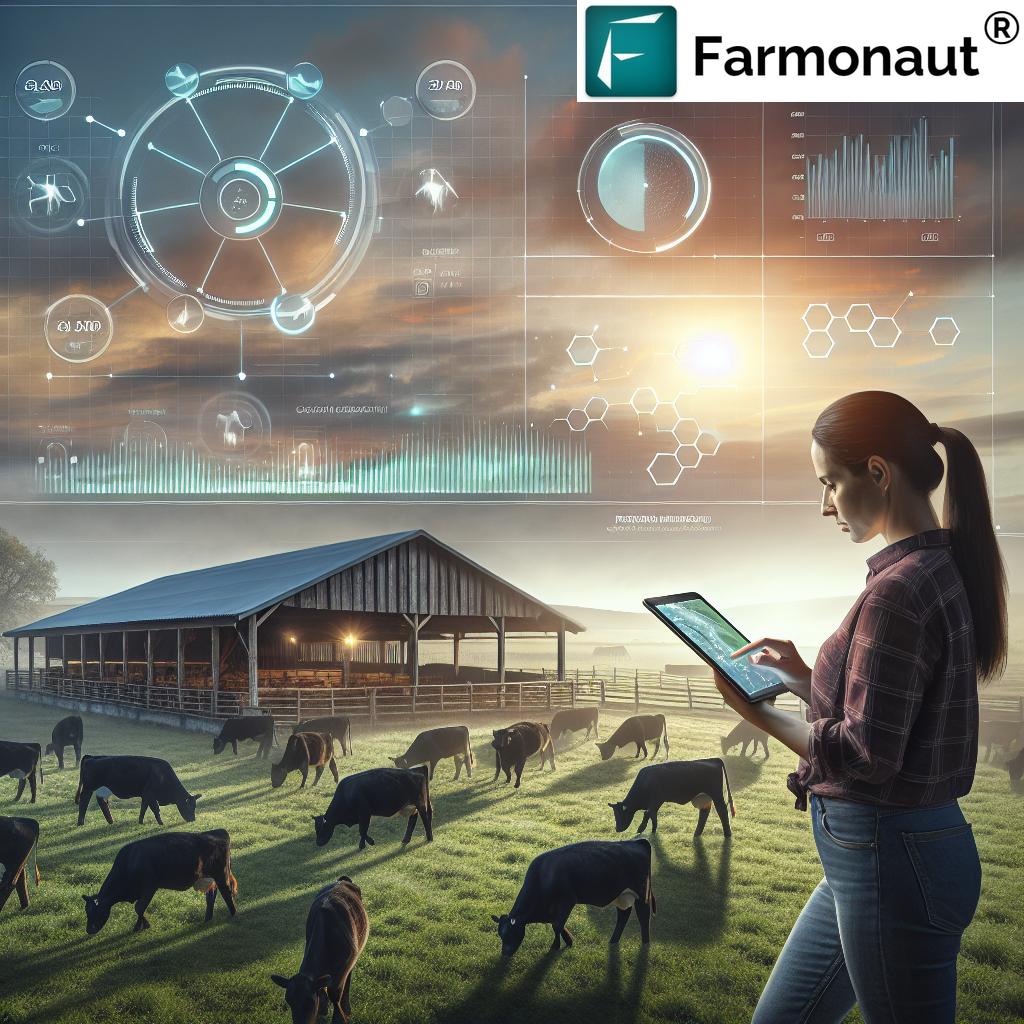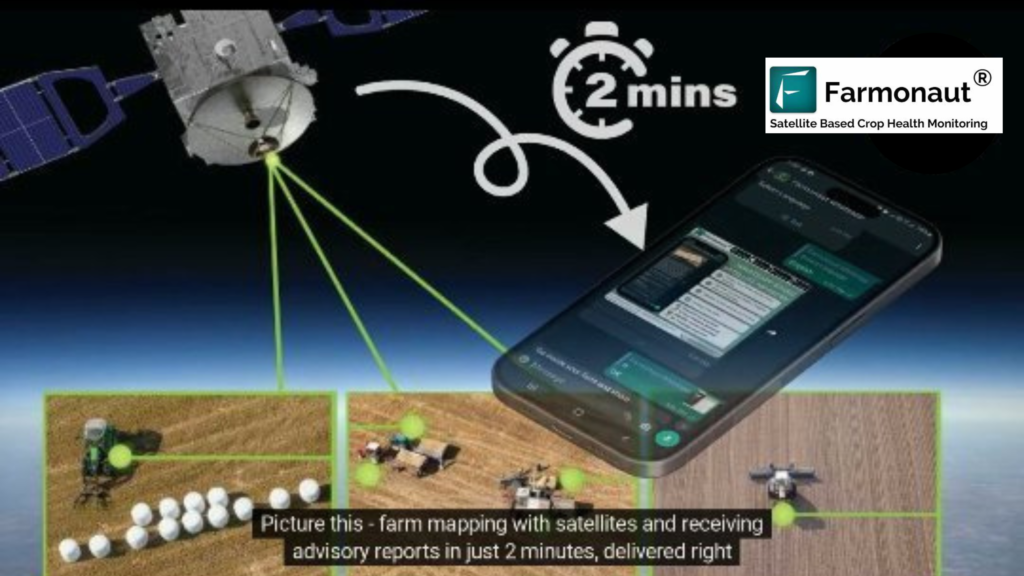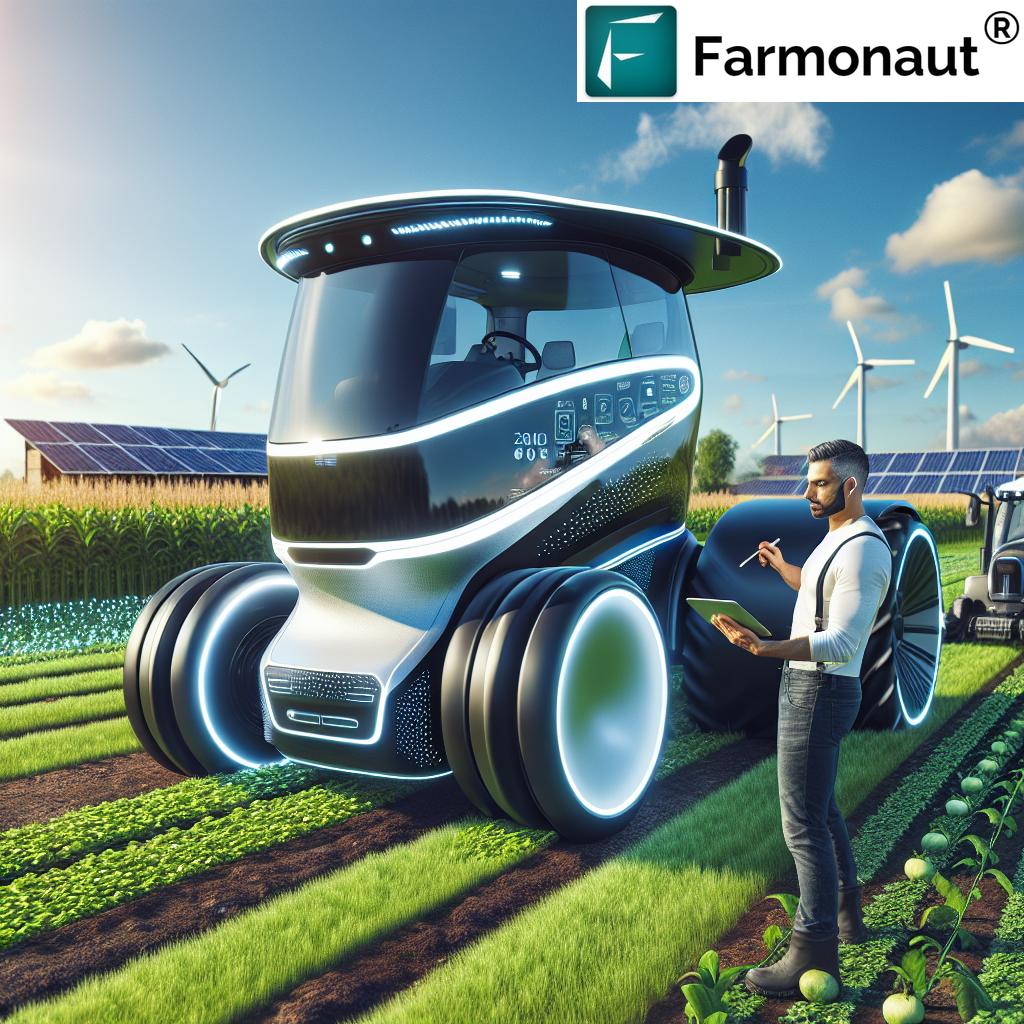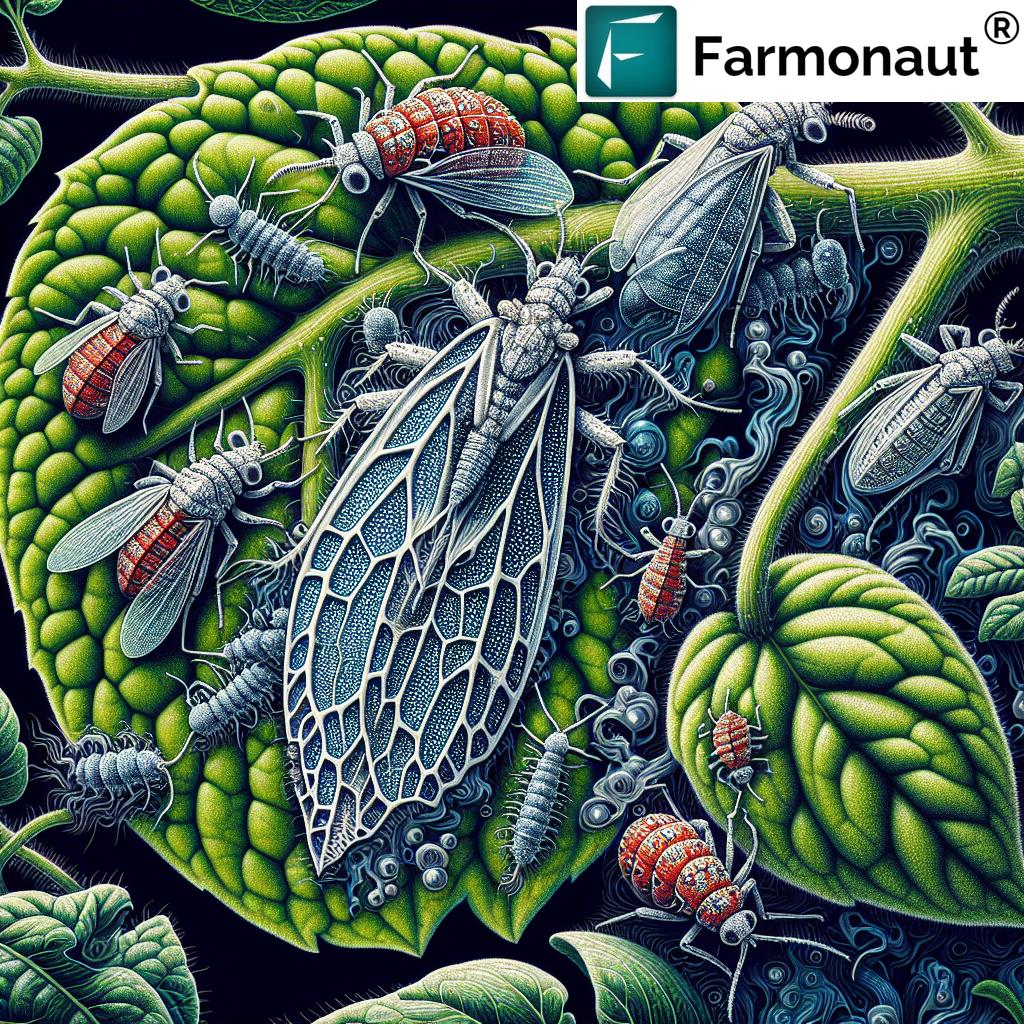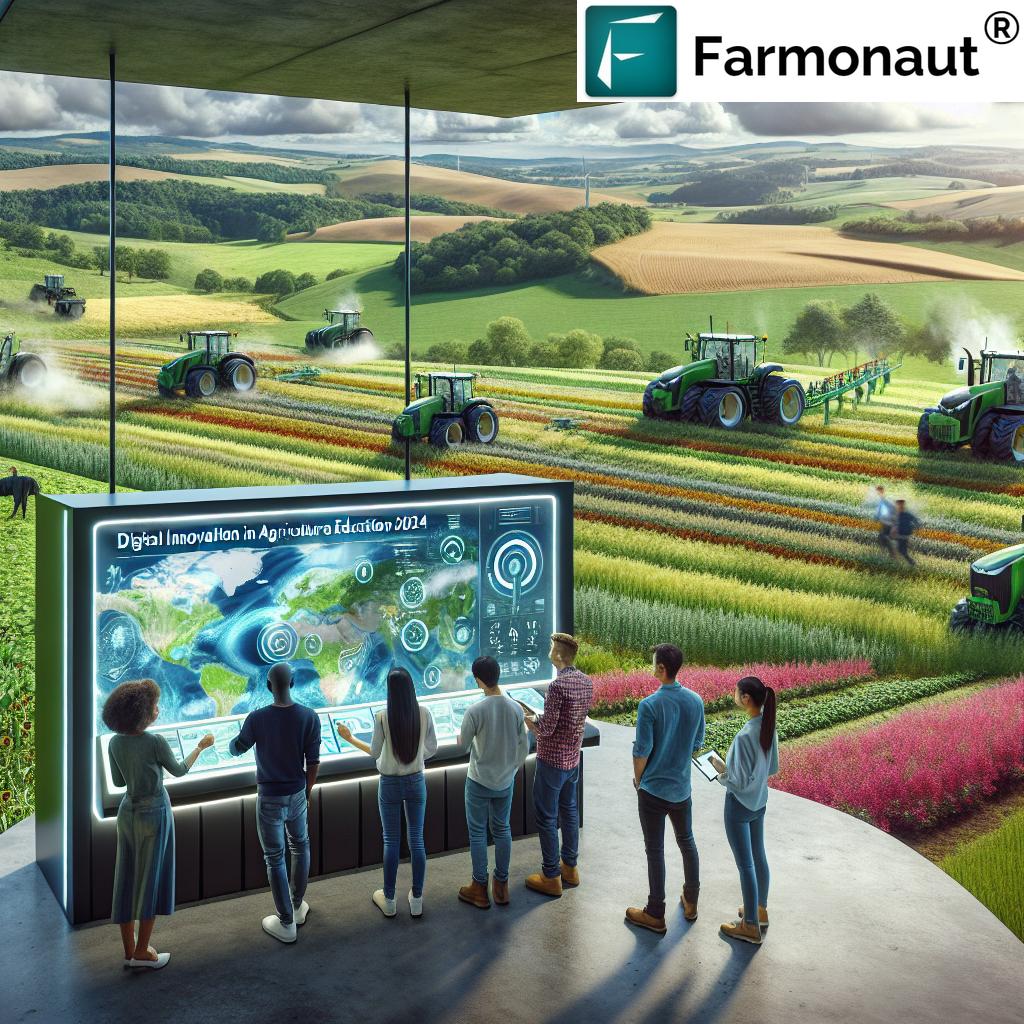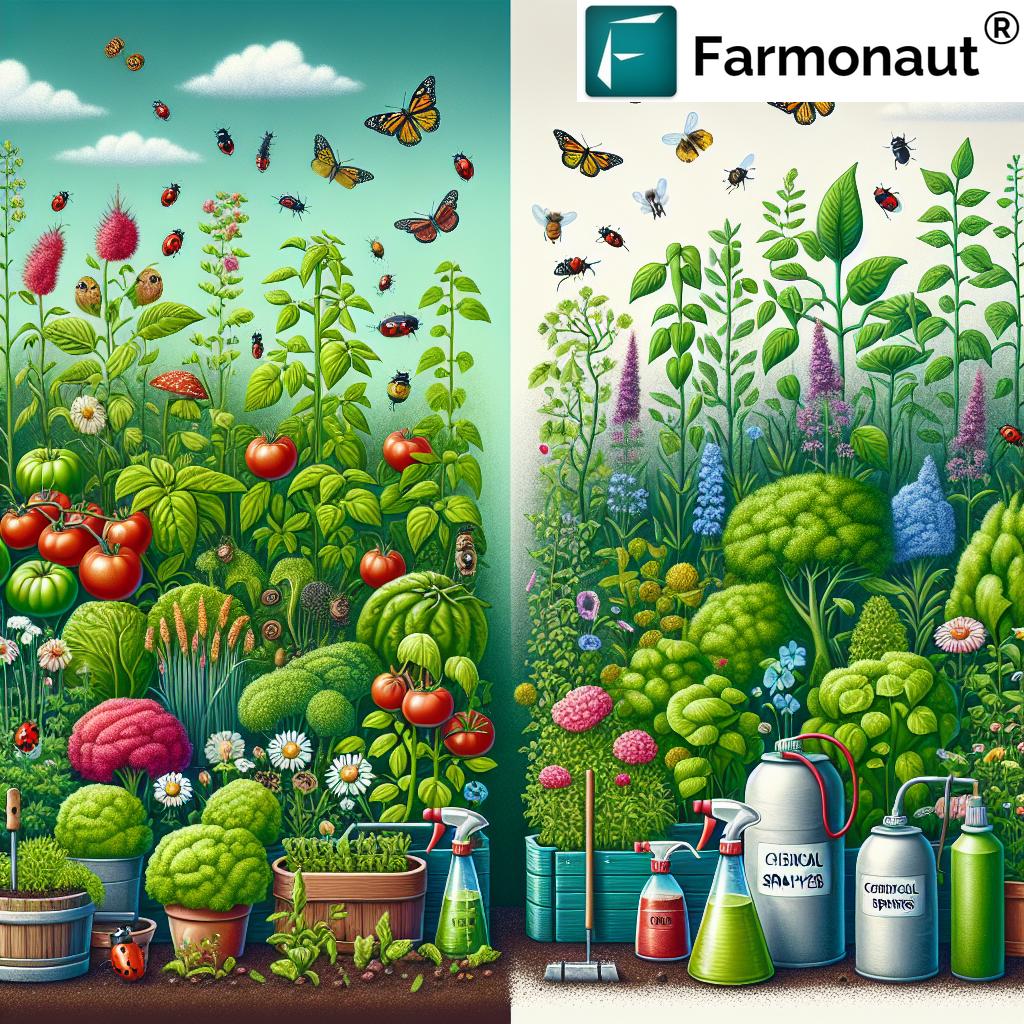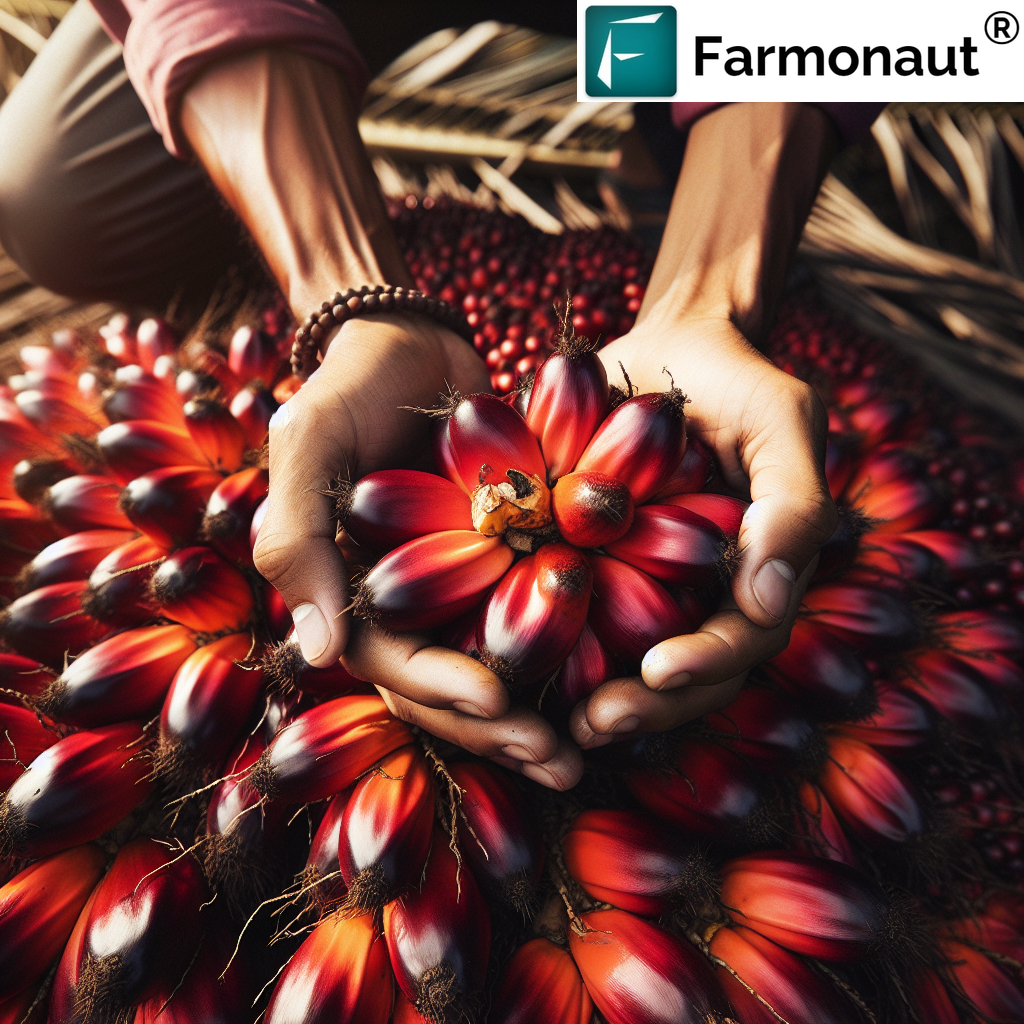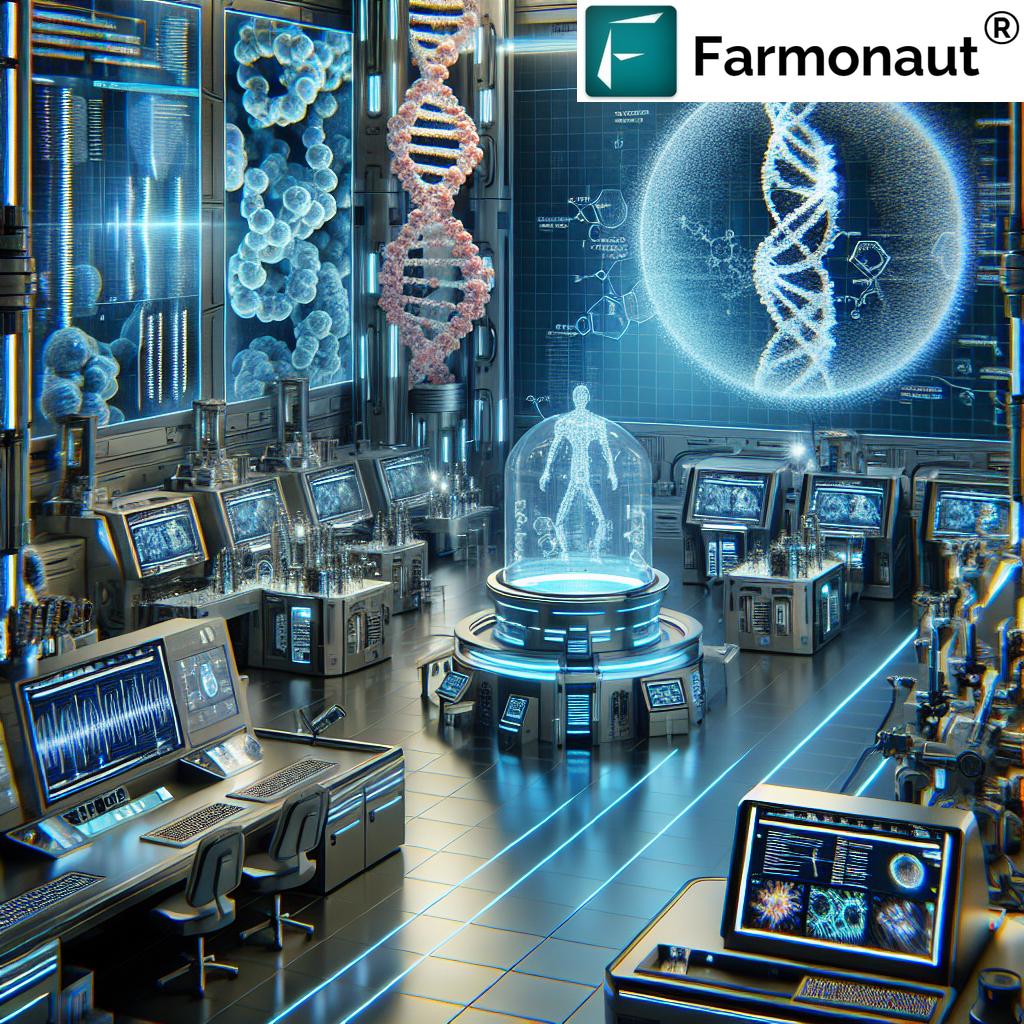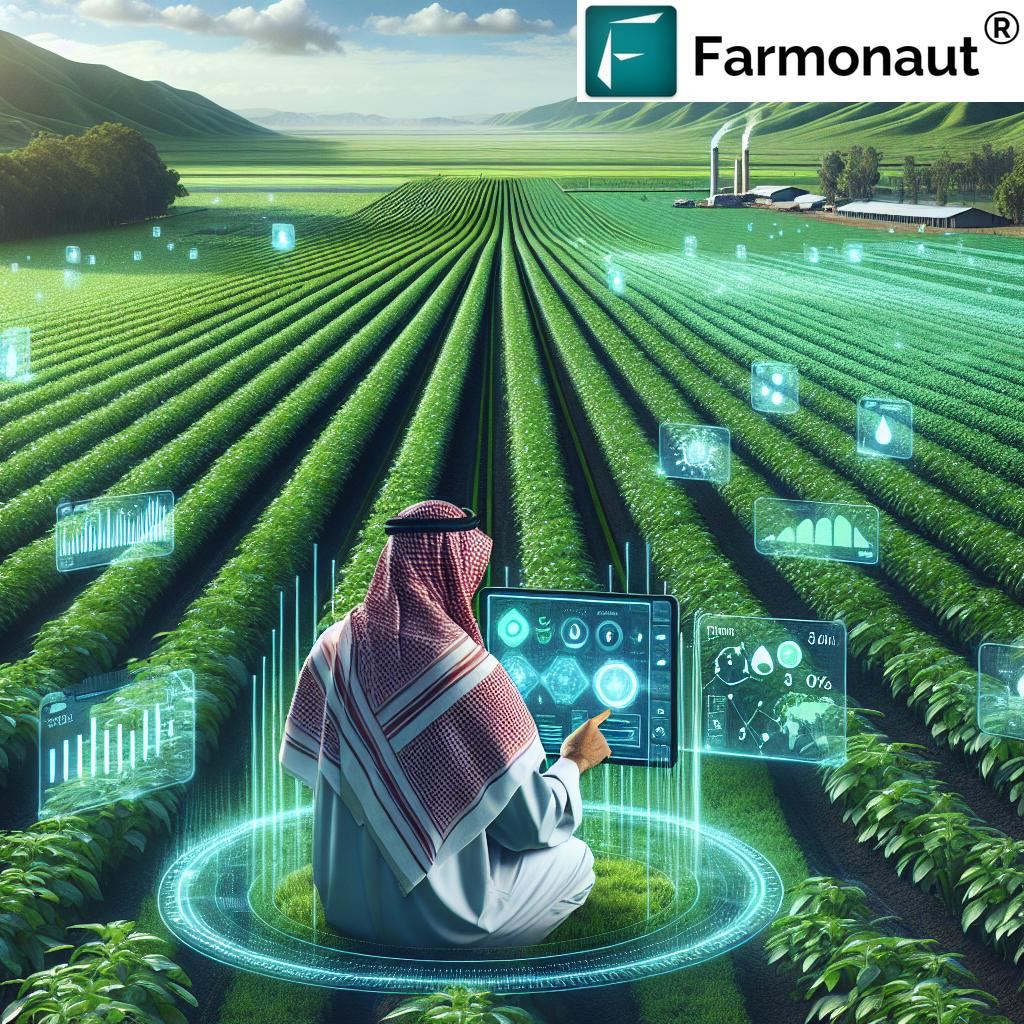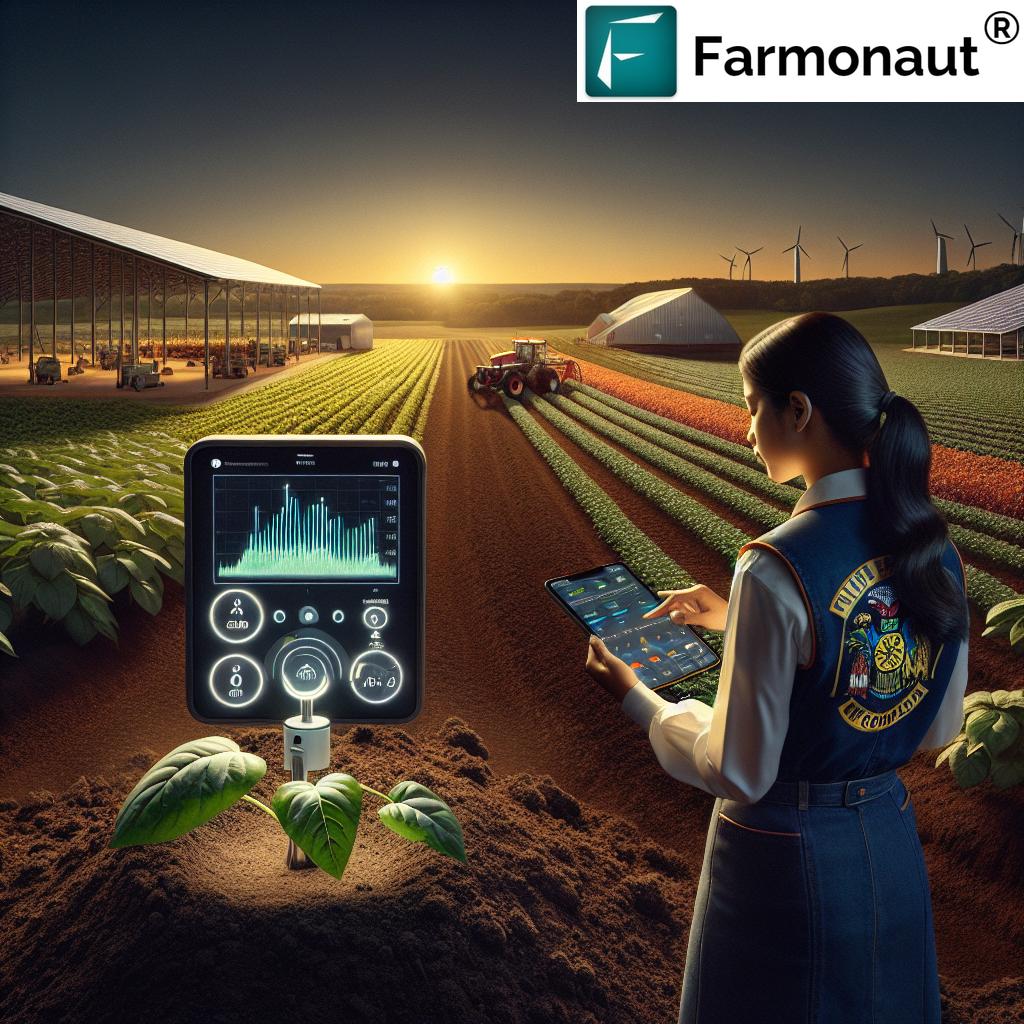Table of Contents
- Introduction: The Era of Smart Farming
- 1. Precision Agriculture: The Cornerstone of Smart Farming
- 2. IoT and Sensor Technology: Real-Time Agricultural Monitoring
- 3. Unmanned Aerial Vehicles & Drones: Aerial Intelligence
- 4. Big Data Analytics: Turning Information into Power
- 5. AI & Machine Learning: Smarter Decisions, Automated Actions
- 6. Blockchain & Traceability: Trustworthy Food Chains
- 7. Climate-Smart & Sustainable Farming: The Road to the Future
- Comparative Benefits Table of Smart Farming Technologies
- Farmonaut: Empowering Global Agriculture
- Frequently Asked Questions (FAQ)
- Conclusion: Shaping the Future with Smart Farm Secrets
“Precision agriculture can increase crop yields by up to 20% while reducing fertilizer use by 15% through data-driven decisions.”
7 Smart Farm Secrets That Revolutionize Agriculture!
Welcome to the next chapter in the evolution of farming—a realm where data, automation, and smart technologies converge to create a sustainable agricultural future. Today, smart farming is no longer a distant dream; it’s a practical, game-changing reality.
In this blog post, we dive into seven powerful secrets behind the transformation of agriculture: from precision agriculture and IoT-powered monitoring to intelligent crop management solutions, AI-driven systems, and sustainable practices. We’ll explore how these digital tools redefine productivity, reduce resource wastage, and provide actionable insights that streamline decision-making for farmers across the globe.
Whether you’re steering a large-scale farm in the United States, overseeing rice cultivation in India, managing tea estates in Kenya, or facilitating forestry projects in Brazil, these secrets hold the blueprint for maximizing yields and operational efficiency.
Focus Keywords: precision agriculture, smart farming technologies, agricultural monitoring systems, crop management solutions, AI in farming, drone use in agriculture, sustainable farming practices, soil health monitoring, climate-smart agriculture.
1. Precision Agriculture: The Cornerstone of Smart Farming
Precision agriculture is the heart of today’s technological revolution in farming. By integrating GPS, Geographic Information Systems (GIS), and variable rate technology (VRT), we can collect and analyze massive data sets on soil conditions, crop health, and environmental factors. This enables a hyper-local, targeted approach to management, boosting both efficiency and sustainability.
- Field Mapping: High-resolution field maps allow us to identify patterns and variability across different fields and even within a single farm.
- Variable Rate Application: Using VRT, we can apply fertilizers and pesticides only where and when they are needed, optimizing inputs and reducing both environmental impact and costs.
- Targeted Solutions: Soil sampling, combined with crop and environmental data, informs us about precise fertilization, irrigation, and planting schedules.
Precision agriculture not only enhances yields but also reduces unnecessary expenditures and supports climate-smart decisions. By using these technologies, we lay the foundation for every smart farming strategy that follows.
Key Benefits:
- Up to 20% yield increase by allocating the right amount of resources at the right spot.
- 15% reduction in fertilizer usage, keeping costs in check and protecting soils.
- Minimized environmental impact thanks to precise application of inputs.
Discover how Farmonaut’s Large-Scale Farm Management Tools empower large farms and agribusinesses. Manage multiple parcels, access satellite-based health monitoring, and get real-time alerts for effective, cost-saving decision-making—all in one platform.
2. IoT and Sensor Technology: Real-Time Agricultural Monitoring
The Internet of Things (IoT) in agriculture delivers the superpower of real-time, data-driven monitoring. By integrating sensors across fields, we gain continual feedback on soil moisture, temperature, humidity, and crop growth.
- Our sensors track micro-climates and field conditions 24/7.
- Real-time feedback enables timely irrigation, fertilization, and pest control—responding before issues escalate.
- Automated data feeds into central monitoring systems, allowing farm managers to view and analyze conditions from any device.
This level of insight is transformative: instead of relying on manual checks or guesswork, every action is data-driven, improving yields while also conserving water and other resources.
Interested in sustainability and efficiency? Farmonaut Carbon Footprinting tracks your farm’s environmental impact in real time, allowing proactive and regulatory-compliant choices for a greener agricultural future.
Why IoT in Agriculture Matters:
- Early detection of water stress and emerging plant diseases.
- Efficient resource management—apply water, nutrients, and pest controls only when necessary.
- Reduced input costs and enhanced productivity through smart automation and monitoring.
With IoT-based soil health monitoring, we build resilient and data-driven farms, ready for tomorrow’s challenges and today’s demands.
“AI-powered monitoring systems can detect crop diseases 30% faster than traditional methods, enabling quicker and more effective interventions.”
3. Unmanned Aerial Vehicles and Drones: Aerial Intelligence for Modern Farming
The rise of unmanned aerial vehicles (UAVs)—or drones—has added a bird’s-eye view to our agricultural operations. With multispectral cameras, drones swiftly survey large fields, producing high-resolution images crucial for identifying issues early—even the naked eye might miss.
- Crop Health Assessments: Drones capture aerial imagery that highlights stressed or diseased crops, variable growth patterns, and irrigation issues.
- Efficient Scouting: Cover vast areas in minutes (instead of hours or days) while collecting detailed data for assessing crop health and detecting diseases.
- Timely Action: Using real-time visuals, we can deploy targeted treatment, improving yields and minimizing losses due to pests or diseases.
Drone use in agriculture is more affordable and accessible than ever before, especially with SaaS options for crop health monitoring and variable-rate spraying.
Need comprehensive, remote diagnostics? Farmonaut’s Crop Plantation & Forest Advisory offers farmers and managers insights from advanced satellite and UAV data to guide operational decisions across agriculture and forestry.
Benefits of Aerial Monitoring:
- Early detection and mapping of pest outbreaks or irregular plant growth patterns.
- Better data for precision agriculture and VRT for fertilizers, water, and pesticides.
- Reduced crop loss and increased efficiency of interventions.
4. Big Data Analytics: Turning Information into Power
The modern farm is a data center in itself. Every season, our fields generate huge amounts of information: sensor readings, drone imagery, satellite data, yield maps, and more. Big data analytics transforms this information into actionable insights.
- Pattern Recognition: By analyzing historical and real-time data, we can identify trends such as pest outbreaks, yield zones, and soil fertility changes.
- Yield & Growth Forecasting: Predict crop yields and risk factors more precisely, enabling better financial planning and resource allocation.
- Optimized Field Management: Anticipate weather changes, irrigation timing, and even disease cycles with predictive models fed by continuous data streams.
Comprehensive analytics empower everyone from smallholders to government agencies with a robust understanding of the complex systems that dictate agricultural productivity.
Want to understand and control crop insurance risk? Farmonaut Crop Loan & Insurance Solutions leverage remote sensing analytics, satellite-based field verification, and yield estimates to reduce fraud and enable fair, data-driven access to credit and insurance.
Analytics Unlock Real Value in:
- Field scouting and labor planning.
- Strategic planting and harvesting schedules.
- Precision budget allocation for fertilization, irrigation, and pest control.
5. AI & Machine Learning: Smarter Decisions, Automated Actions
Artificial intelligence (AI) and machine learning are prime movers in transforming agriculture. These powerful algorithms sift through vast datasets, identifying subtle signals and optimizing core operations that humans might overlook.
- AI-based Advisory: From crop planning to pest management, AI in farming delivers timely, tailored recommendations that guide our decisions all season long.
- Disease & Pest Detection: Using image recognition and sensor data, machine learning models identify pests, diseases, or deficiencies before they become visible to the human eye.
- Automated Operations: Self-driving tractors and harvesters powered by AI reduce labor costs, standardize practices, and increase operational efficiency.
With Farmonaut’s Jeevn AI Advisory System, farmers benefit from real-time insights, weather intelligence, satellite data analysis, and customized cropping solutions. This direct-to-farmer, app-based AI increases efficiency and yields without the need for large IT investments.
Explore Fleet & Resource Management to see how AI optimizes logistics and asset utilization, reducing operational waste and maximizing farm machinery uptime.
Example: AI-Powered Crop Management Solutions
- In India, AI algorithms identify early-stage rice blast disease from satellite images, alerting farmers weeks before yield is at risk.
- In the US Midwest, algorithms combine weather, soil, and crop health data to optimize planting and harvest timing for maximum returns.
As AI adoption increases, it’s helping to close the knowledge gap, enabling both experienced farmers and new entrants to consistently make smarter choices on the field.
6. Blockchain & Traceability: trustworthy Food Chains
Transparency and trust are essential in today’s food supply chains. Blockchain technology is transforming how we track and verify each stage, from field to fork, by creating immutable, tamper-proof digital records.
- End-to-End Traceability: Blockchain registers every step, recording where and when crops are planted, grown, harvested, transported, and processed.
- Improved Food Safety: In the event of an outbreak or contamination, precise traceability enables rapid identification and recall of affected lots, reducing risk for consumers and producers.
- Sustainability Verification: Certifications and sustainable practices can be tracked in real-time, fostering consumer trust and opening up premium markets.
Farmonaut’s Blockchain-based Product Traceability empowers agricultural exporters, food companies, and smallholder supply chains with transparent, seamless, and secure product histories. Enhance trust and access world markets with digital proof of authenticity and compliance.
Key Advantages of Digital Traceability
- Reduces fraud and counterfeiting in agricultural products.
- Accelerates loan and insurance approvals through reliable data verification.
- Strengthens partnerships with retailers and consumers demanding transparency.
7. Climate-Smart & Sustainable Farming: The Road to the Future
Today, the most forward-thinking farmers embrace sustainable farming practices—not just for compliance, but as a strategic advantage to increase yields, protect soil health, and adapt to climate change. Climate-smart agriculture integrates technology and regenerative methods for resilient, profitable, and future-proof operations.
- Conservation Tillage: Reduced soil disturbance lowers erosion, improves soil moisture, and stores more carbon.
- Precision Irrigation: Data-driven water management cuts usage and increases resilience during droughts.
- Agroforestry: Blending crops with trees enhances biodiversity, soil structure, and long-term farm productivity.
- Carbon Tracking: Monitoring and reducing farm carbon footprints contributes to regulatory compliance and market premiums.
By tracking carbon emissions and consistently applying sustainable, site-specific practices, we don’t just fix present issues—we future-proof farms against unpredictable weather and resource scarcity.
Learn more about Carbon Footprinting with Farmonaut: monitor emissions, benchmark improvements, and achieve carbon-neutral agriculture goals faster.
Comparative Benefits Table of Smart Farming Technologies
| Secret / Technology | Key Benefit | Estimated Yield Improvement (%) | Estimated Cost Savings (%) | Sustainability Impact (Scale 1-5) |
Ease of Implementation (Scale 1-5) |
|---|---|---|---|---|---|
| Precision Agriculture | Variable-rate fertilization and targeting treatments | 15–20 | 10–15 | 5 | 3 |
| IoT & Sensor Technology | 24/7 soil & crop monitoring, actionable data | 12–17 | 8–12 | 4 | 3 |
| Drones & UAVs | Aerial surveillance for crop health and pest detection | 10–15 | 8–10 | 5 | 4 |
| Big Data Analytics | Forecasting yields, precision input allocation | 18–22 | 15–18 | 4 | 3 |
| AI & Machine Learning | Automated detection, recommendation engines | 15–20 | 15–20 | 5 | 3 |
| Blockchain & Traceability | End-to-end product verification and transparency | — | 8–12 | 5 | 4 |
| Climate-Smart & Sustainable Practices | Reduced environmental impact, resource efficiency | 8–12 | 6–10 | 5 | 2 |
Try Smart Farming the Farmonaut Way
Unlock the full suite of precision agriculture features with affordable, scalable subscriptions.
Farmonaut’s platform is designed to support everyone, from small farmers to government agencies, with world-class satellite-based crop monitoring, AI-powered advisory, blockchain traceability, and more. Flexible web, mobile, and API access put the power of innovation at your fingertips.
Farmonaut: Empowering Global Agriculture
Farmonaut stands at the forefront of the precision agriculture movement, offering advanced satellite-based agricultural monitoring systems accessible via Android, iOS, web apps, and APIs. Our mission is making smart farming technologies affordable, data-driven, and actionable for all—regardless of farm size or region.
What Makes Us Different?
- Satellite-Based Crop Health Monitoring: Real-time NDVI and multispectral imagery for soil health monitoring, irrigation planning, and yield optimization—all without the cost of ground sensors.
- AI Advisory Systems: Jeevn AI delivers personalized insights, weather forecasts, and management recommendations—customized for every field, every season.
- Blockchain Traceability: Secure, transparent supply chains, building trust from the field to the marketplace.
- Fleet & Asset Management: Optimize vehicle and resource usage with intelligent, app-based tools.
- Carbon Footprinting: Track, measure, and reduce emission footprints for regulatory compliance and global market access.
Accessible, Affordable, Scalable: Our subscription-based platform is designed for individual farmers, agribusinesses, government projects, NGOs, and corporate supply chains. Our APIs easily integrate into your existing systems, amplifying value and ease of use.
Transform your farm’s future. Start today with Farmonaut Apps and Web Platform.
Empower Every Acre with Technology:
- Cut decisions from days to minutes.
- Boost yields, cut costs, and ensure traceability on every crop.
- Adapt to climate change, market demands, and ever-evolving regulations.
See our API Developer Docs for seamless integration with your agri-business or research organization.
Frequently Asked Questions (FAQ)
What is precision agriculture, and why is it important?
Precision agriculture uses data-driven approaches, often integrating GPS, sensors, and analytics, to optimize every aspect of crop production—applying inputs only where and when needed. This enhances yields, cuts costs, and reduces environmental impact.
How do smart farming technologies improve crop management solutions?
By leveraging sensors, AI, big data, and remote sensing, smart farming technologies enable real-time agricultural monitoring. This leads to early detection of crop diseases, more precise irrigation and fertilization, and ultimately, higher productivity.
How does Farmonaut help with climate-smart agriculture?
Farmonaut offers affordable, scalable climate-smart agriculture solutions, including satellite monitoring for water stress, AI-based insights for sustainable practices, and carbon footprint tracking to improve farm resilience and meet regulatory benchmarks.
What are the cost-effective ways for small farmers to adopt smart agriculture?
Small farmers can start with SaaS and app-based platforms that offer satellite crop monitoring and AI-driven recommendations without needing to invest in expensive ground equipment. Farmonaut’s flexible subscriptions and app-based accessibility make this possible.
Can Farmonaut integrate with large-scale farm or fleet management systems?
Yes. Farmonaut provides specialized Fleet Management Tools and Large-Scale Farm Management solutions. Our API and platform can be tailored to integrate with existing agri-business and logistics systems.
How does blockchain-based traceability reduce agricultural fraud?
By creating immutable digital records for every step of the supply chain, blockchain technology ensures no entry can be altered or faked—significantly reducing the risk of fraudulent claims or mislabeling.
Conclusion: Shaping the Future with Smart Farm Secrets
The journey toward revolutionized agriculture is now clearer than ever. By embracing precision agriculture, real-time data from IoT in agriculture, aerial intelligence, big data analytics, AI models, and blockchain-backed trust, we can increase productivity and sustainability—while reducing costs and risks.
At Farmonaut, we remain committed to delivering these breakthroughs in smart farming technologies to every grower, researcher, and agribusiness worldwide: practical, science-backed solutions made accessible through the power of advanced digital platforms and apps.
Whether you’re managing 2 or 2000 hectares, the path to higher yields, lower costs, and environmental responsibility starts with seven smart, actionable secrets. Make every season count—leverage technology for a sustainable, secure food future.


